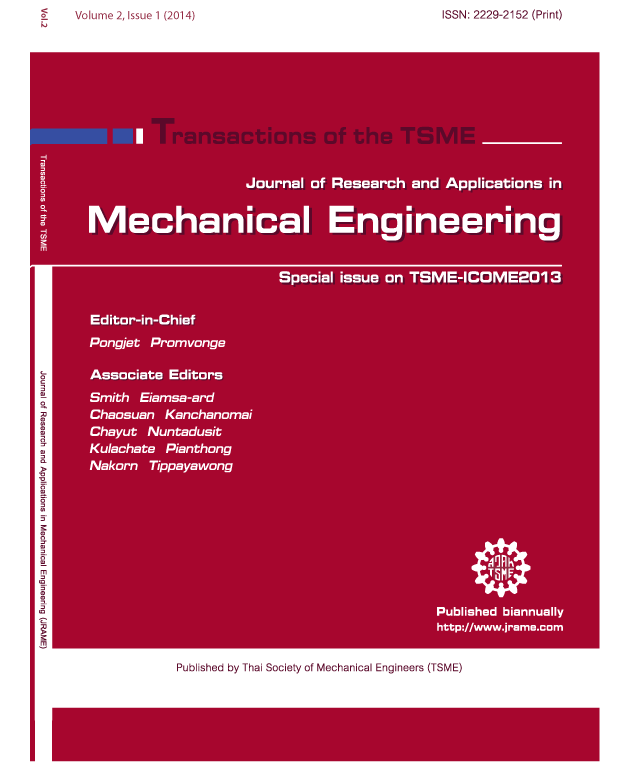Formation‐keeping of uncertain satellites using nonlinear damping control
Main Article Content
Abstract
A formation-keeping control methodology is proposed that includes both attitude and orbital control requirements in the presence of model uncertainties. The approach develops the requisite control in a two-step process. First, a nominal system model that provides our best assessment of the real-life uncertain system is defined, and a nonlinear controller that satisfies the required attitude and orbital requirements of this nominal system is developed. The controller allows the nonlinear nominal system to exactly track the desired attitude and orbital requirements. Since this closed-form controller assumes that the model of the physical system—the nominal system—has no errors or uncertainties, in the second step an additional additive controller that compensates for model uncertainties is developed. The desired trajectory of the nominal system is used as the tracking signal, and a controller based on a generalization of the concept of a nonlinear damping is developed. The resulting closed-form control causes the desired attitude and orbital requirements of the nominal system to be met in the presence of unknown, but bounded, model uncertainties.
Article Details
This work is licensed under a Creative Commons Attribution-NonCommercial-ShareAlike 4.0 International License.
References
reconfiguration maneuvers, The 20th International Symposium on Space Flight Dynamics, Annapolis,
Maryland, 2007.
[2] Hill, G.W. Researches in the Lunar Theory. American Journal of Mathematics, Vol. 1(1), 1878, pp. 5-26.
[3] Clohessy, W.H. and Wiltshire, R.S. Terminal Guidance System for Satellite Rendezvous, Journal of
Aerospace Sciences, Vol. 27(8), 1960, pp. 653-658.
[4] Tschauner, J. and Hempel, P. Rendezvous zu Einemin Elliptischer Bahn Umlaufenden Ziel, Astronautica
Acta, Vol. 11(2), 1965, pp. 104-109.
[5] Yan, Q., Kapila, V. and Sparks, A.G. Pulse-based periodic control for spacecraft formation flying, American
Control Conference, Chicago, Illinois, 2000, pp. 374-378.
[6] Won, C.H. and Ahn, H.S. Nonlinear orbital dynamic equations and state-dependent riccati equation control of
formation flying satellites, Journal of the Astronautical Sciences, Vol. 51, 2003, pp. 433-449.
[7] Kristiansen, R., Grotli, E.I., Nicklasson, P.J. and Gravdahl, J.T. A model of relative position and attitude in a
leader-follower spacecraft formation, Scandinavian Conference on Simulation and Modeling, Trondheim,
Norway, 2005.
[8] Long, M.R. and Hall, C.D. Attitude tracking control for spacecraft formation flying, Flight Mechanics
Symposium, Goddard Space Flight Center, 1999.
[9] Ahn, C. and Kim, Y. Point targeting of multisatellites via a virtual structure formation flight scheme, Journal
of Guidance, Control, and Dynamics, Vol. 32, 2009, pp. 1330-1344.
[10] Udwadia, F.E. and Kalaba, R.E. What is the general form of the explicit equations of motion for constrained
mechanical systems, Journal of Applied Mechanics, Vol. 69, 2002, pp. 335-339.
[11] Udwadia, F.E. Equations of motion for mechanical systems: A unified approach, International Journal of
Non-Linear Mechanics, Vol. 31, 1996, pp. 951-958.
[12] Udwadia, F.E. Nonideal Constraints and lagrangian dynamics, Journal of Aerospace Engineering, Vol. 13,
2000, pp. 17-22.
[13] Kalaba, R.E. and Udwadia, F.E. Equations of motion for nonholonomic, constrained dynamical systems via
gauss’s principle, Journal of Applied Mechanics, Vol. 60, 1993, pp. 662-668.
[14] Udwadia, F.E. A new perspective on the tracking control of nonlinear structural and mechanical systems,
Proceedings of the Royal Society A, Vol. 459, 2003, pp. 1783-1800.
[15] Udwadia, F.E. Equations of motion for constrained multibody systems and their control, Journal of
Optimization Theory and Applications, Vol. 127, 2005, pp. 627-638.
[16] Udwadia, F.E. Optimal tracking control of nonlinear dynamical systems, Proceedings of the Royal Society A,
Vol. 464, 2008, pp. 2341-2363.
[17] Udwadia, F.E. and Kalaba, R.E. A new perspective on constrained motion, Proceedings of the Royal Society
A, Vol. 439, 1992, pp. 407-410.
[18] Schutte, A. and Udwadia F.E. New approach to the modeling of complex multi-body dynamical systems,
Journal of Applied Mechanics, Vol. 78, 2011, pp. 021018-1 to 11.
[19] Cho, H. and Yu, A. New approach to satellite formation-keeping: exact solution to the full nonlinear problem,
Journal of Aerospace Engineering, Vol. 22, 2009, pp. 445–455.
[20] Vallado, D.A. Fundamentals of astrodynamics and applications, 2nded. The Space Technology Library, El
Segundo, 2001.
[21] Cho, H. and Udwadia, F.E. Explicit solution to the full nonlinear problem for satellite formation-keeping,
Acta Astronautica, Vol. 67, 2010, pp. 369-387.
[22] Udwadia, F.E. and Schutte, A.D. An alternative derivation of the quaternion equations of motion for rigidbody
rotational dynamics, Journal of Applied Mechanics, Vol. 77, 2010, pp. 044505-1 - 044505-4.
[23] Sabol, C., Burns, R., and McLaughlin, C.A. Satellite formation flying design and evolution, Journal of
Spacecraft and Rockets, Vol. 38, 2001, pp. 270-278.
[24] Khalil, H.K. Nonlinear Systems, Prentice-Hall, Upper Saddle River, New Jersey, pp. 551-589, 2002.



